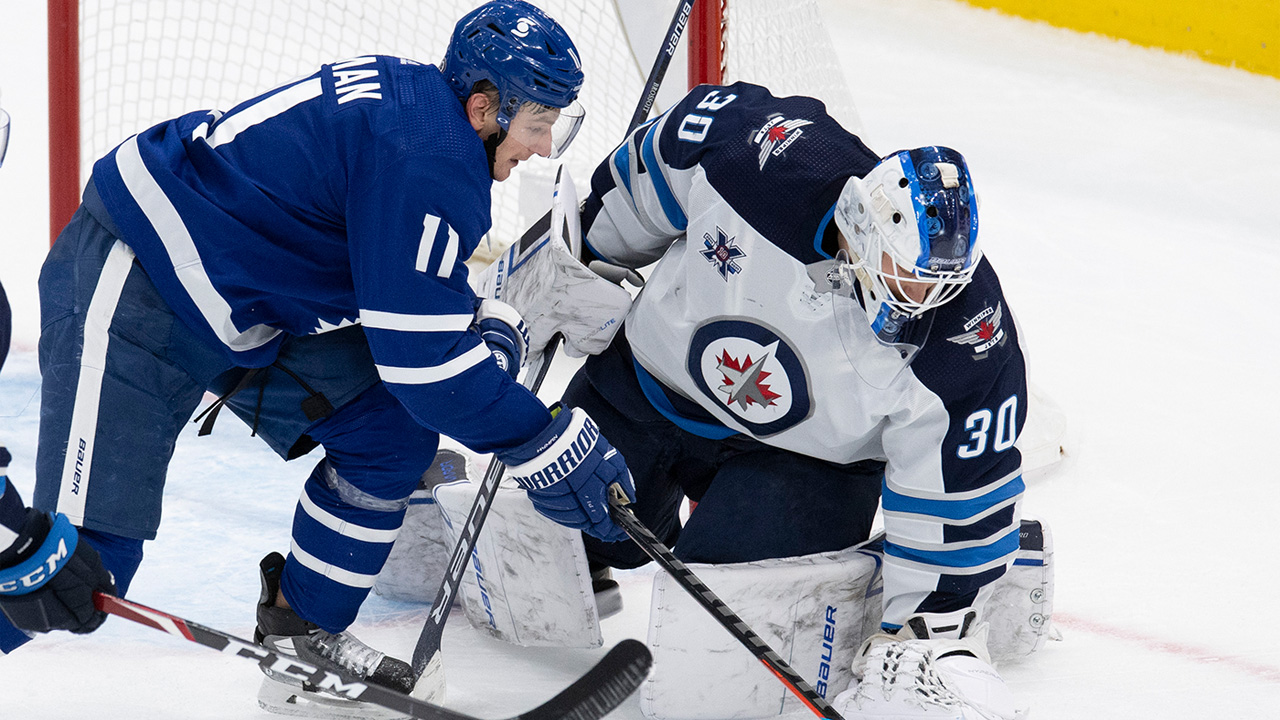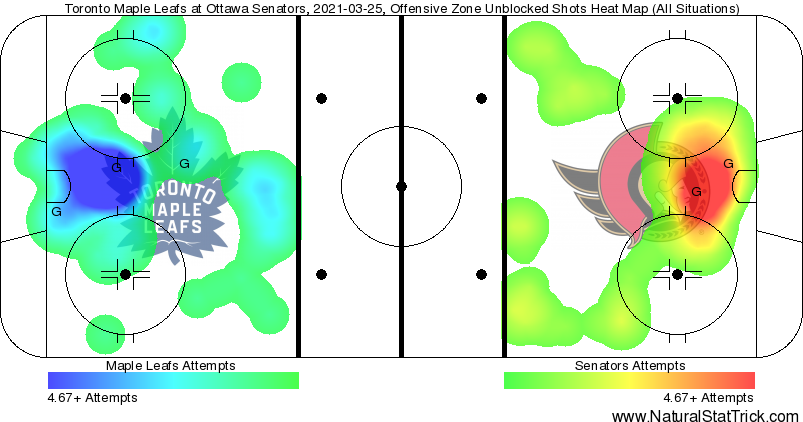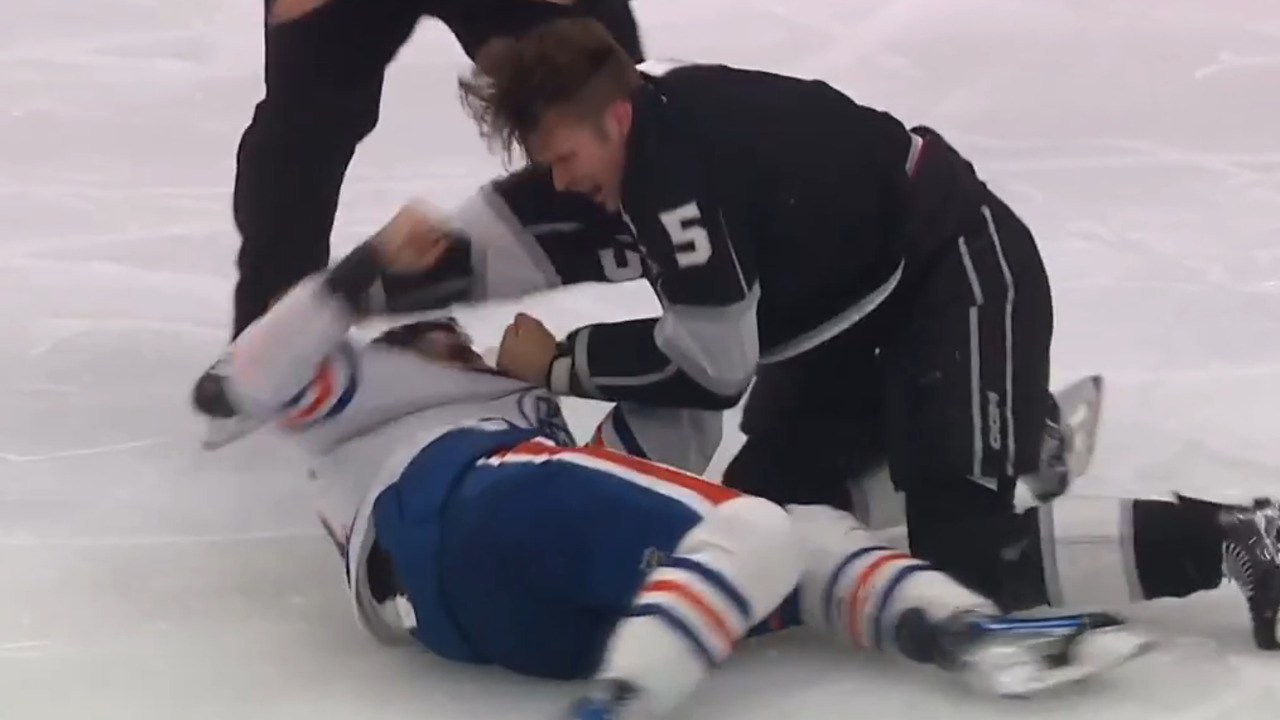
Every professional sports team, from the undefeated Miami Dolphins to Michael Jordan’s Bulls to Wayne Gretzky’s Oilers and on down, have a version of their play that can be beat. Of course, when they serve up those performances, it’s not a lock that they will, in fact, get beat. Hey, the Dolphins never did. It’s not at all uncommon for us to say about good teams that they “didn’t have their best last night, but they got it done.”
So any time you’ve got a Stanley Cup hopeful team on your hands, it’s useful to ask the question “What does it look like when they’re not at their best?”, to figure out if there’s a way a certain opponent can put them in that position. And whenever you’re a part of a team, you try to figure out how to make your worst better, and ways to avoid ending up in scenarios where you’re weak.
In this case, I’m talking about the Toronto Maple Leafs, who sit atop the North Division two nights after demonstrating a version of their play that was, in fact, beatable. They were facing the North’s seventh-placed Ottawa Senators, who were on the wrong end of a back-to-back, and had played twice in 11 days.
It went to overtime.
Regardless of how events played out, that’s not a great outcome for the team in blue and white.
Before Leafs fans quibble over the framing here, yes they were the better team in the game. Yes, they had more shots and chances and possession in general. But as Zach Hyman noted in an interview after the second period, the Leafs weren’t generating enough legitimately dangerous chances. They had slot shots (check a heat map!), they had the supporting numbers, but it never really felt like they put Ottawa under sustained duress to cause them much panic.

A reason for that could be the way Ottawa put them in a position that troubles the Leafs — they packed it into the middle of the ice deep in their own zone, denied passes through the dangerous areas of the ice, and at least forced the play to the outskirts of what coaches call “the house” or the “home plate” area in front of the crease. None of that should shock you, since DJ Smith should have some idea what’s been the Leafs’ kryptonite in the past.
Whether by design or not, that basically hands the ball off to the goalie and says “stop the clean looks you see, we’ll clear the dangerous rebounds, and we’ll have a chance.” (Of note: Matt Murray not doing that for the Sens this season is at least partially why their record is so bad.)
This comparison may rub some Leafs fans the wrong way, but to my eye the Leafs looked like they did in the qualifiers against Columbus, a five-game series they were on the wrong side of in the summer of 2020. They controlled the play, dominated statistically, and “should have” won. Part of the problem, which I wrote about here, is how much of that dominated play was just on the outside, leading to one-and-done chances. And when you’re carrying the run of play without scoring, it’s common to get hyper-focused on breaking through, and cease prioritizing defence, which can lead to dangerous rushes back the other way.
If you’re picking up what I’m putting down here, when teams protect the house as a priority against the Leafs they have trouble getting inside, as the players most suited to that in the past have been Hyman and after that question marks. This year it’s Hyman and … maybe Wayne Simmonds?
If you’re the Leafs prioritizing making your worst better, I don’t put this on the skill guys at the top. I’m not suggesting Mitch Marner needs to live in the blue paint and trade crosschecks with Erik Gudbranson. Those top-four Leaf forwards are elite, special scorers, and while they can sometimes use reminders that the best thing they can do to create is to just take it across the net, you generally think they’re going to make the right offensive decisions.
So what they need to do to avoid ending up as the losing team that “should have won” against teams that pack it in like the Islanders (the Leafs’ worst nightmare team, BTW), is to get that net drive from everyone else without the puck. The onus is on guys like Ilya Mikheyev (who got a greasy one going to the net Thursday, coincidentally) and Pierre Engvall to be all over the opposing goalie in their crease, constantly. They need Simmonds to live there, too. They need their skill coming downhill into the mess after shots (not staying out on the perimeter), and with those bodies collapsing down, they need their D to sift pucks into those trouble areas.
If the opponent wants to create a quagmire in front, fine, let them, just live in that muck and don’t tiptoe around the outside of it.
It’s never fun to tell a team with as much skill as the Leafs to get it into the mess and create rebounds instead of leaning on their skill, but this is a team with aspirations of playoff success. We remember cross-seam backdoor playoffs connections because they start happening once every fifth game or so, not every fifth period like in the regular season.
When I think about successful playoff teams the past few years, I see a Blues team with a heavy bottom six, with forwards who were willing to get into those trouble spots. The Dallas Stars had a ton of success with their bottom forwards being at and around the net last summer, contributing at surprising times. I think of the Bruins two years ago, of the additions the Lightning made last year.
It’s not about being tough so much as being willing to share the rink space around the goalie, which should occupy defenders so the skill guys can work around the perimeters of the fray with a little more time and space. If your heat map looks like it did against Ottawa on Thursday, but those shots are less contested, I’m guessing a few more go in.
That net-front presence has been a fatal flaw for the Leafs in the past, who haven’t lacked for game-breaking talent for years now. Are they that much different than they’ve been, or will the issue resurface in tight games yet again?
It doesn’t have to, if their depth players can get comfortable living on the inside. If they don’t, it may only take a playoff round or two until the Leafs are once again sitting on the outside.





